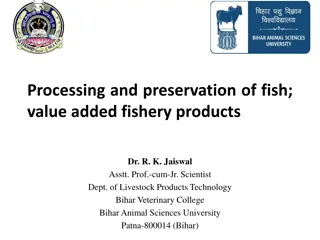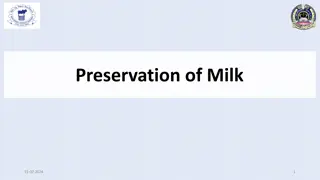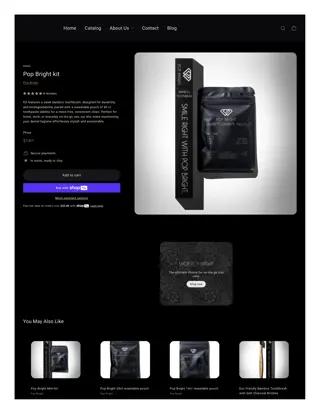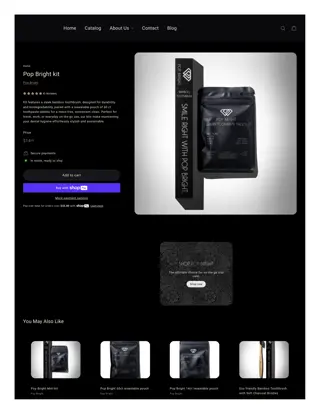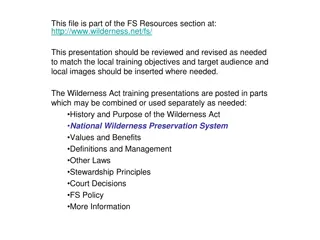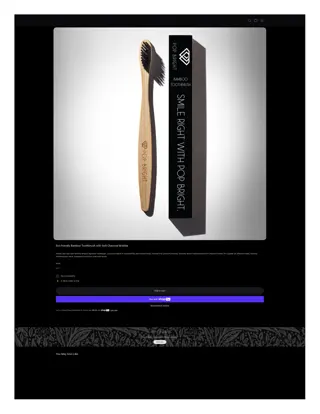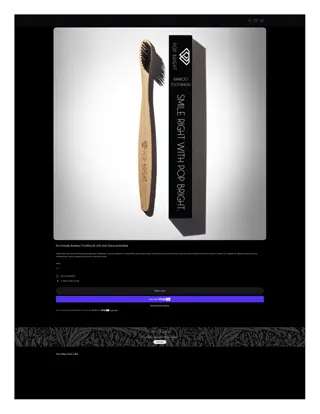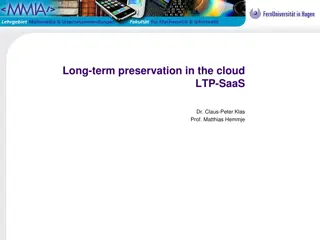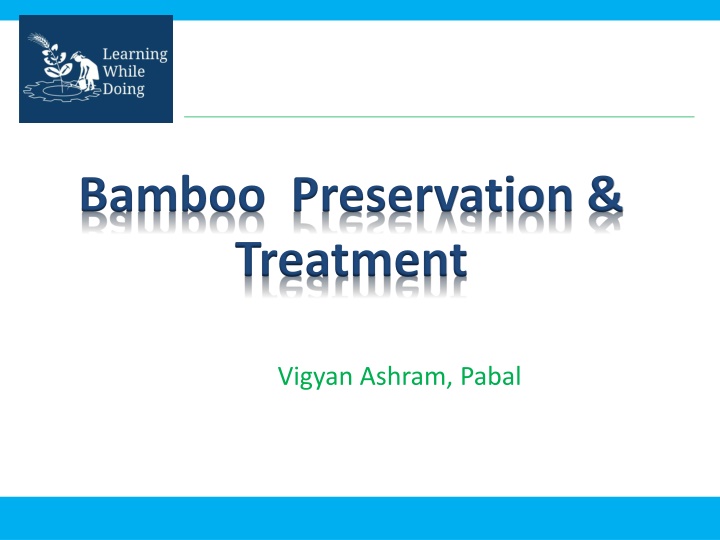
Bamboo Preservation Methods and Importance in Prolonging Bamboo's Lifespan
Learn about the significance of bamboo preservation and treatment to extend the durability of bamboo products. Discover traditional and chemical methods used to protect bamboo from decay, insect attacks, and fungal damage. Explore the benefits of preserving bamboo, such as increased longevity and reduced replacement costs.
Download Presentation

Please find below an Image/Link to download the presentation.
The content on the website is provided AS IS for your information and personal use only. It may not be sold, licensed, or shared on other websites without obtaining consent from the author. If you encounter any issues during the download, it is possible that the publisher has removed the file from their server.
You are allowed to download the files provided on this website for personal or commercial use, subject to the condition that they are used lawfully. All files are the property of their respective owners.
The content on the website is provided AS IS for your information and personal use only. It may not be sold, licensed, or shared on other websites without obtaining consent from the author.
E N D
Presentation Transcript
Bamboo Preservation & Treatment Vigyan Ashram, Pabal
What if not protected? Without any protective treatment, most bamboo species have an average durability of less than 2 years. Stored under cover, untreated bamboo may last 4-7 years
Importance of bamboo treatment and preservation Bamboos are a natural material and will decay with time. They are also susceptible to insect and fungal attack Preserved bamboos increases the durability of the culms and increases the lives of the products they are used to produce. If used as structural components they need to be replaced less often which reduces costs in the long term Preserved bamboos fetch higher prices than non- preserved bamboos
Bamboo Preservation Methods Basically there are two methods : 1.Non-Chemical, Traditional Bamboo Treatment Methods 2. Chemical Bamboo Treatment Methods
Non-Chemical, Traditional Bamboo Treatment Method 1 -Non-Chemical, Traditional Bamboo Treatment : These are ancient methods which have been practiced in areas where bamboo commonly grows. They are simple and cost-effective without the use of chemicals or supporting equipment.
Chemical Bamboo Treatment Method 2 - Chemical Bamboo Treatment : Chemical preservatives are used to protect bamboo products from degradation. These are well established methods providing good protection even in adverse conditions
Non-Chemical, Traditional Bamboo Treatment 1. Leaching Leaching helps remove starch and also enhances permeability for future treatment by diffusion and pressure. This method is appropriate for treating any quantity of bamboo. It is also recommended for craft and mat applications where flexibility is required.
Non-Chemical, Traditional Bamboo Treatment 2. Smoking Traditionally, culms are stored over the fireplace. The moisture content in smoked culms is thus reduced so that biological degradation cannot take place. Built-up deposits from smoke form a protective layer on the culm. Smoke drying also reduces splitting.
Short Term Chemical Bamboo Treatment 1. Brushing It is suitable for small handicraft and household tems. 2-3 coats of chemicals should be given using a brush. 2. Dipping Dipping is used for medium quantities of bamboo/bamboo products. Dipping is more effective than spraying or brushing. A momentary dip of 30 seconds to a minute is sufficient to protect the material. The excess material should be drained and reused.
Long Term Chemical Bamboo Treatment 1. Diffusion Method: Diffusion are suitable for green bamboo only. Round bamboo, splits and slivers can be treated by keeping them submerged in water-borne preservative solution. (water-borne preservatives like Boric acid:Borax 1:1.4 ...etc ) The method of diffusion can be varied by increasing the concentration of preservative to reduce treatment time Scale: The process is slow, requiring a large number of tanks. It is suitable for treating 50-100 culms a month.
Long Term Chemical Bamboo Treatment 2. Hot and cold Method: Hot and cold treatment requires air-dry bamboo It is based on the principle that on heating, air from the cells will expand and partially escape. During cooling a slight vacuum is created due to contraction of the residual air and causes the entry of preservative into the cell. Scale: Large quantities can be treated at one time Preservatives : Creosote for exterior uses (can be heated to 900 C) Boric acid-Borax (should be heated to 500 C)
Long Term Chemical Bamboo Treatment Hot and cold Method:




